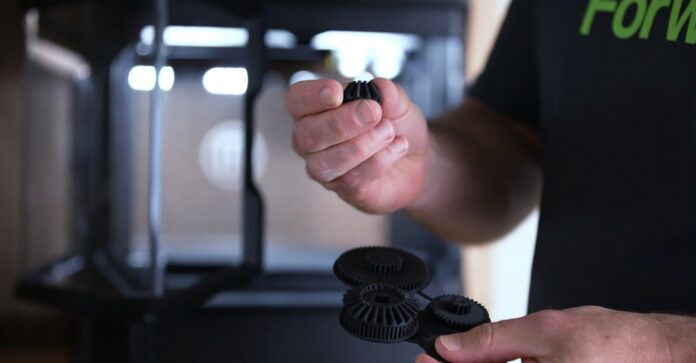It’s not unusual but it is definitely not systemic yet to see manufacturers producing toys to leverage 3D printing as part of their activities. So far, the famous brand Lego, the startup Little You and Knitting machines are some of the brands that we know have already take a leap into the technology. Another that recently joined the movement is Mattel, a global toy company that is on a mission to empower the next generation to explore the wonder of childhood and reach their full potential.
The Mattel team currently leverages 3D printing to facilitate their research, design and development activities. This mission is the responsibility of Jack Peach, key lead innovation engineer at Mattel, and the Product Innovation team. Jack and his team support all of Mattel’s portfolio of iconic brands, including Barbie, Hot Wheels, Fisher-Price, American Girl, Thomas & Friends, UNO, Masters of the Universe, Monster High and MEGA. From simple mechanical features to researching and prototyping toys of tomorrow, the Product Innovation team helps Mattel brands execute their vision based on consumer insight, one learns.
Who would have thought that inspiring, entertaining, and developing children through play is such a serious business?
Simply put, the Mattel team currently use digital design software and hardware tools for sketching and rough model layout, mechanical feature design and simulation, virtual model (VR and AR) visualization and electronic hardware/software development. For fabrication, they have access to hand tools and power tools to build prototypes to prove out rough size and function.
“In early 2020, I decided to invest in a 3D printer that offered high resolution, high repeatability and was super easy to use. When I started using the METHOD 3D printers, I realized 3D printing parts at home at the industrial level with industry standard material was amazing,” said Peach. “Our team’s focus is to share innovative product features with the brand team and help bring them to market. When physical models are needed, our team can rely on industrial-grade 3D printing materials like ABS-R or Nylon Carbon Fiber because they are durable enough to prove out form and function.”
In his home office, Peach added the MakerBot METHOD® and MakerBot METHOD X® to the mix of tools he already uses.
Digital design and development are key at Mattel for unlocking efficiencies and innovation internally and working with outside vendors. Through an iterative process, concepts can be shared with its brand partners, the Fisher-Price™ Play Lab and the Mattel® Imagination Center for toy testing and consumer insights for feedback. The design is then updated, fabricated as needed, and shared again, the company shared in a press release.
“Brainstorming and concept sketching is where it all starts. Minimal deco changes to last years’ products might be approved with visuals in the digital space. But if we’re trying to prove out a mechanical function/feature or appropriate sizing for a child, fabricating a model is essential. The prototype can reveal unforeseen issues that need to be resolved or you might discover a new use case or feature that elevates the product,” he continued. “With a 3D printer, you don’t have to re-fabricate the entire prototype by hand. You can make a few adjustments digitally, send it to the printer, and have a new part printed quickly. This process makes modifications, testing, and reviewing so much easier and quicker.”
The MakerBot 3D printers are mostly used to print early prototype models to prove out an electromechanical function. Jack uses a mix of 3D printing materials depending on the application. Since most of his team’s work is for demonstration of a new feature or function, he typically uses a material that can withstand hundreds of cycles. Recently, they started to use ABS-R for housings and structural features due to the material’s high impact resistance and durability, and Nylon Carbon Fiber for gears.
Printing high-quality custom parts on demand has enabled the team to provide dimensionally accurate assemblies that are very similar to injection molded production assemblies, helping to prove out a toy’s features quicker and with high confidence of success.
Remember, you can post jobopportunities in the AM Industry on 3D ADEPT Media free of charge or look for a job via our job board. Make sure to follow us on our social networks and subscribe to our weekly newsletter : Facebook, Twitter, LinkedIn & Instagram ! If you want to be featured in the next issue of our digital magazine or if you hear a story that needs to be heard, make sure to send it to contact@3dadept.com






